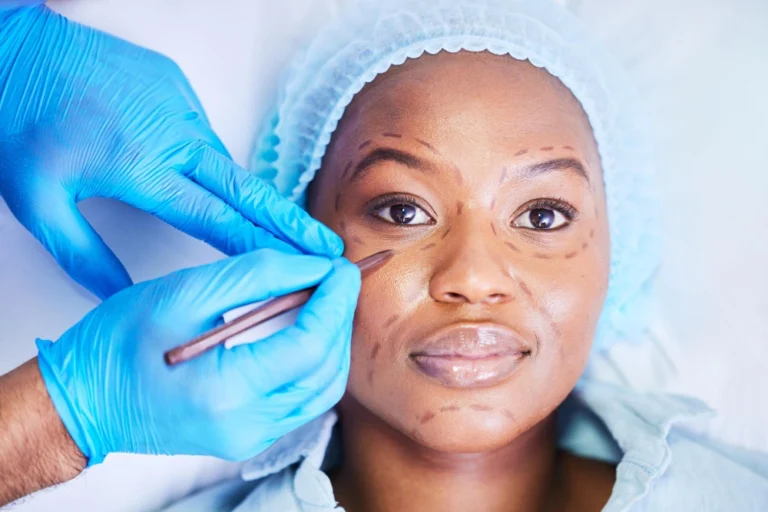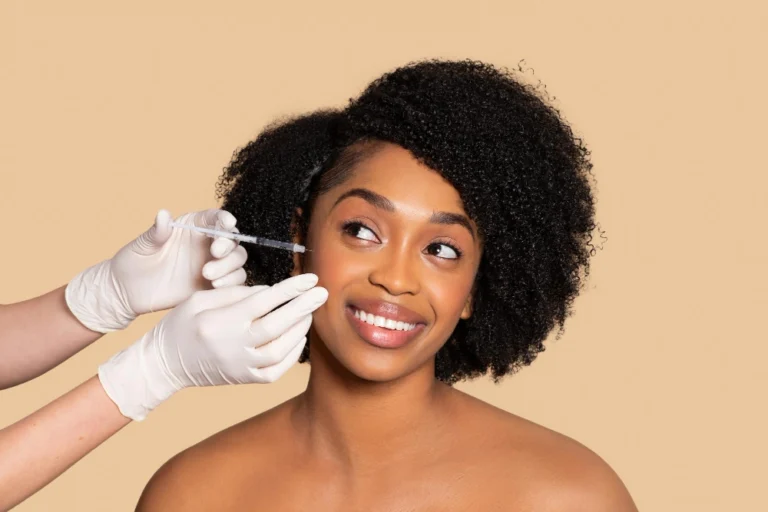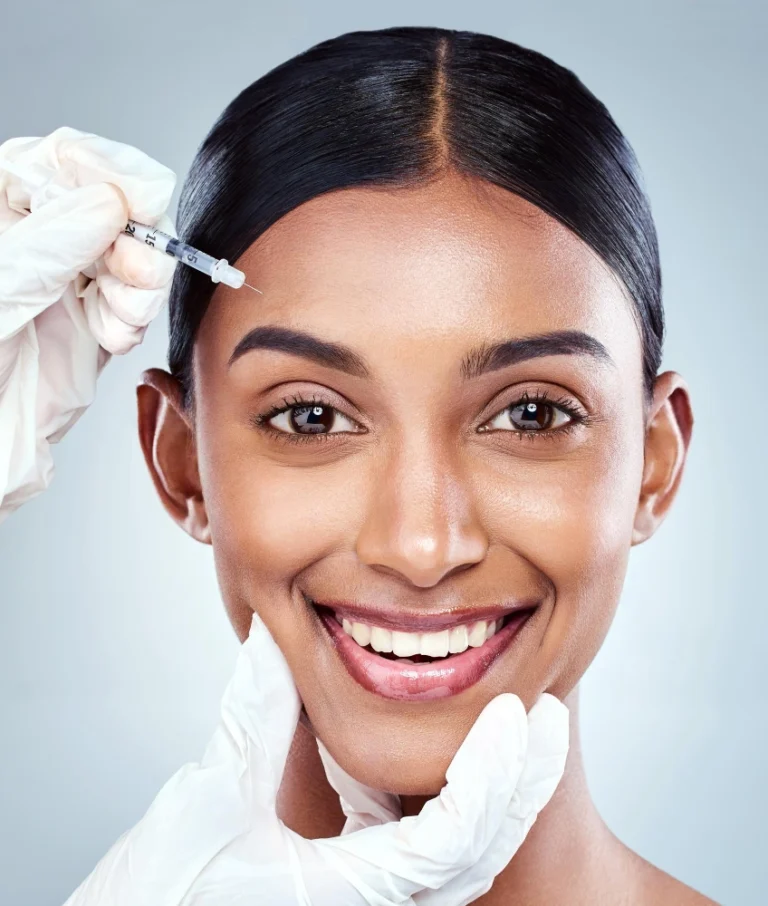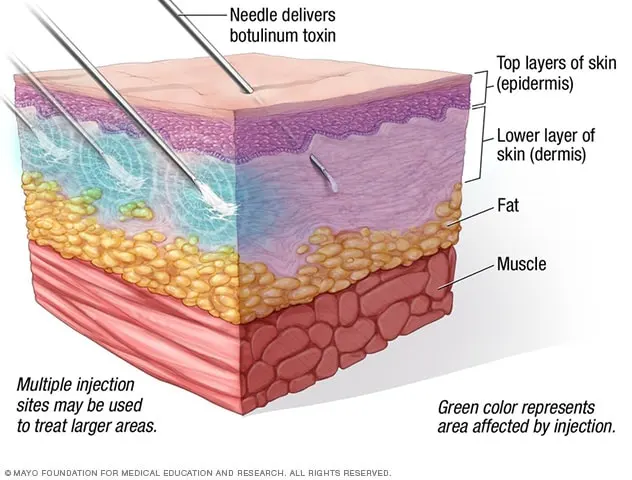Botox injections In Griffin, GA
Botox injections use a toxin to temporarily relax muscles, typically reducing facial wrinkles. At GloFusion, we also treat conditions such as neck spasms, excessive sweating, overactive bladder, and lazy eye, and even help prevent migraines. Although the toxin is derived from the bacteria that causes botulism, the pure form used in Botox is safe when administered by licensed professionals. At GloFusion, we strictly adhere to FDA-approved guidelines to ensure safe and effective treatments.

Why it's done
Neck spasms
In this painful condition, the neck muscles contract in an uncontrolled way. This causes the head to twist or turn into an uncomfortable position. The condition also is called cervical dystonia.
Other muscle spasms
Cerebral palsy and other conditions of the nervous system can cause the limbs to pull in toward the center of the body. Muscle spasms also can cause eye twitching.
Sweating
Botox might be used for a condition in which people sweat a lot even when they're not hot or working up a sweat. It's called excessive sweating or hyperhidrosis.
Migraine
Botox injections may help reduce how often you get a migraine. This treatment is used mainly for people who have headaches 15 or more days a month. When you get serious headaches that often, the condition is called chronic migraine. Treatment is needed about every three months to retain the benefit.
Lazy eye
The most common cause of lazy eye is an imbalance in the muscles used for moving the eye. Lazy eye also is called crossed eyes or misaligned eyes.
Bladder problems
otox shots can also help reduce urinary incontinence caused by an overactive bladder.
Risks of Botox injections
- Pain, swelling or bruising at the injection site.
- Headache or flu-like symptoms.
- Droopy eyelids or crooked eyebrows.
- A crooked smile or drooling.
- Watery or dry eyes.
- Infection at the injection site.
Rarely, the medicine may spread to parts of the body where it isn’t supposed to go. It can cause symptoms there. Call your health care provider right away if you have any of these symptoms hours or weeks after your procedure:
- Muscle weakness.
- Vision problems.
- Trouble talking or swallowing.
- Breathing problems.
- Allergic reaction.
- Loss of bladder control.


Choose your healthcare provider Carefully when having Botox Injection.
Botox injections In Griffin, GA | GloFusion Clinic
How to Prepare for Botox Injection
What you can expect from Botox Injection
Before the procedure
- Most people don’t feel much pain during the procedure.
- You may want your skin numbed beforehand, especially if your palms or feet are being treated for heavy sweating.
- Your health care provider might use one or more of the following methods to numb the area:
- Anesthetic applied to the skin
- Ice
- Massage (also called vibration anesthesia)
During the procedure

- Type A. Type A is mainly used for treating facial wrinkles. Type A products include onabotulinumtoxinA (Botox), abobotulinumtoxinA (Dysport), incobotulinumtoxinA (Xeomin), daxibotulinumtoxinA (Daxxify) and prabotulinumtoxinA (Jeuveau).
- Type B. Type B is often the first choice for treating neck spasms. It’s sold as rimabotulinumtoxinB (Myobloc).
After the procedure
- Do not rub or massage the treated areas for 24 hours.
- Avoid lying down for 2 to 4 hours after getting the shots.
- Following these guidelines helps prevent the toxin from spreading to areas where it isn’t needed.
- You can likely return to your usual activities right after the procedure, but check with your health care provider.

